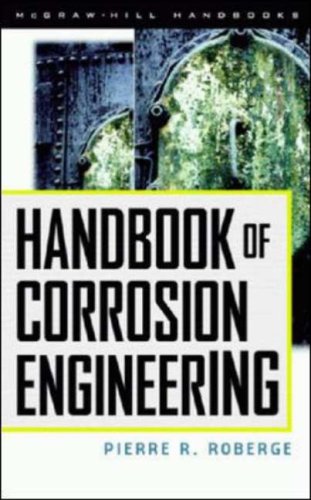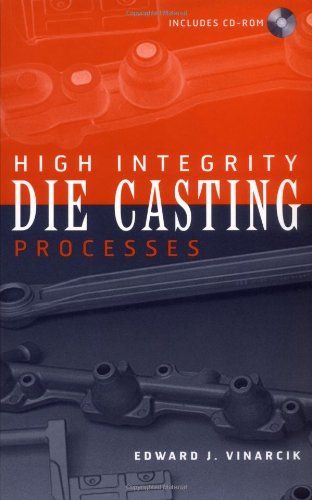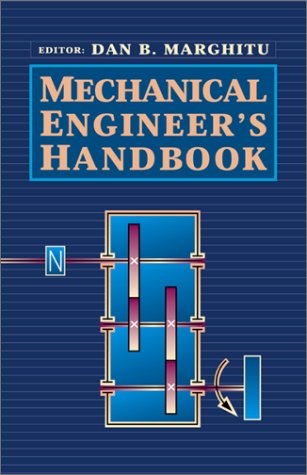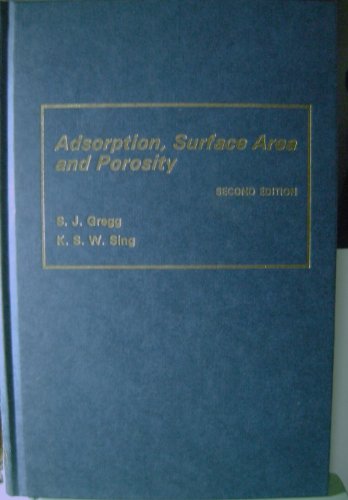Pierre Roberge0070765162, 9780070765160
Emphasizing quantitative techniques, this guide provides you with:
*Theory essential for understanding aqueous, atmospheric, and high temperature corrosion processes Corrosion resistance data for various materials Management techniques for dealing with corrosion control, including life prediction and cost analysis, information systems, and knowledge re-use Techniques for the detection, analysis, and prevention of corrosion damage, including protective coatings and cathodic protection More
Table of contents :
Front Matter……Page 1
Preface……Page 7
Acknowledgments……Page 9
Table of Contents……Page 3
Index……Page 0
I.1 The Cost of Corrosion……Page 10
I.2.3 The Aloha Aircraft Incident……Page 12
I.2.5 Corrosion of the Infrastructure……Page 13
I.3 The Influence of People……Page 14
1.1 Introduction……Page 22
1.2 Applications of Potential-pH Diagrams……Page 25
1.2.1 Corrosion of Steel in Water at Elevated Temperatures……Page 26
1.2.2 Filiform Corrosion……Page 35
1.2.3 Corrosion of Reinforcing Steel in Concrete……Page 38
1.3.1 Kinetics at Equilibrium: The Exchange Current Concept……Page 41
1.3.2 Kinetics Under Polarization……Page 44
1.3.3 Graphical Presentation of Kinetic Data……Page 51
2. Environments……Page 64
2.1.1 Types of Atmospheres and Environments……Page 67
2.1.2 Theory of Atmospheric Corrosion……Page 70
2.1.3 Atmospheric Corrosivity and Corrosion Rates……Page 78
2.1.4 Atmospheric Corrosion Rates as a Function of Time……Page 93
2.2 Natural Waters……Page 95
2.2.1 Water Constituents and Pollutants……Page 97
2.2.2 Essentials of Ion Exchange……Page 109
2.2.3 Saturation and Scaling Indices……Page 115
2.2.4 Ion Association Model……Page 122
2.2.5 Software Systems……Page 133
2.3.1 Introduction……Page 140
2.3.2 Corrosion Resistance of Materials in Seawater……Page 149
2.4.2 Soil Classification Systems……Page 153
2.4.3 Soil Parameters Affecting Corrosivity……Page 154
2.4.4 Soil Corrosivity Classifications……Page 159
2.4.5 Corrosion Characteristics of Selected Metals and Alloys……Page 162
2.5.1 Introduction……Page 165
2.5.2 Concrete as a Structural Material……Page 166
2.5.3 Corrosion Damage in Reinforced Concrete……Page 167
2.5.4 Remedial Measures……Page 177
2.5.5 Condition Assessment of Reinforced Concrete Structures……Page 191
2.5.6 Life Prediction for Corroding Reinforced Concrete Structures……Page 195
2.5.7 Other Forms of Concrete Degradation……Page 197
2.6.1 Basics of Microbiology and MIC……Page 198
2.6.2 Biofouling……Page 211
2.6.3 Biofilm Control……Page 219
References……Page 227
3. High-Temperature Corrosion……Page 232
3.1.1 Standard Free Energy of Formation Versus Temperature Diagrams……Page 233
3.1.2 Vapor Species Diagrams……Page 234
3.2 Kinetic Principles……Page 240
3.2.1 The Pilling-Bedworth Relationship……Page 243
3.2.2 Micromechanisms and Rate Laws……Page 244
3.3 Practical High-Temperature Corrosion Problems……Page 248
3.3.1 Oxidation……Page 249
3.3.2 Sulfidation……Page 256
3.3.3 Carburization……Page 266
3.3.4 Metal Dusting……Page 269
3.3.6 Gaseous Halogen Corrosion……Page 271
3.3.7 Fuel Ash and Salt Deposits……Page 273
3.3.9 Corrosion in Liquid Metals……Page 274
3.3.10 Compilation and Use of Corrosion Data……Page 275
References……Page 276
4.1 Introduction……Page 278
4.2.1 The Bottom-Up Approach……Page 279
4.2.2 The-Top Down Approach……Page 288
4.2.3 Toward a Universal Model of Materials Failure……Page 302
4.3 Applications of Artificial Intelligence……Page 314
4.3.1 Expert Systems……Page 317
4.3.2 Neural Networks……Page 329
4.3.3 Case-Based Reasoning……Page 332
4.4 Computer-Based Training or Learning……Page 333
4.5 Internet and the Web……Page 335
References……Page 337
5. Corrosion Failures……Page 341
5.2.1 Forms of Corrosion……Page 342
5.2.2 Modes and Submodes of Corrosion……Page 362
5.2.3 Corrosion Factors……Page 364
5.2.4 The Distinction Between Corrosion-Failure Mechanisms and Causes……Page 367
5.3 Guidelines for Investigating Corrosion Failures……Page 369
5.4 Prevention of Corrosion Damage……Page 370
5.4.1 Uniform Corrosion……Page 372
5.4.2 Galvanic Corrosion……Page 373
5.4.3 Pitting……Page 374
5.4.5 Intergranular Corrosion……Page 375
5.4.8 Stress Corrosion Cracking……Page 376
5.5 Case Histories in Corrosion Failure Analysis……Page 378
References……Page 379
Corrosion Maintenance through Inspection and Monitoring……Page 380
6.1 Introduction……Page 381
6.2 Inspection……Page 383
6.2.2 Process Piping……Page 384
6.2.3 Risk-Based Inspection……Page 386
6.3 The Maintenance Revolution……Page 392
6.3.1 Maintenance Strategies……Page 393
6.3.2 Life-Cycle Asset Management……Page 396
6.3.3 Maintenance and Reliability in the Field……Page 403
6.4.1 The Role of Corrosion Monitoring……Page 415
6.4.2 Elements of Corrosion Monitoring Systems……Page 418
6.4.3 Essential Considerations for Launching a Corrosion Monitoring Program……Page 419
6.4.4 Corrosion Monitoring Techniques……Page 425
6.4.5 From Corrosion Monitoring to Corrosion Management……Page 437
6.5.1 Introduction……Page 457
6.5.2 Optical Fiber Basics……Page 460
6.5.3 Emerging Corrosion Monitoring Applications……Page 461
6.5.4 Summary……Page 469
6.6.1 Introduction……Page 470
6.6.2 Principles and Practices……Page 471
6.6.3 Data Analysis……Page 487
References……Page 490
7. Acceleration and Amplification of Corrosion Damage……Page 493
7.1 Introduction……Page 494
7.2 Corrosion Testing……Page 496
7.2.1 Corrosion Tests and Standards……Page 499
7.2.2 Examples of Corrosion Acceleration……Page 508
7.2.3 Laboratory Tests……Page 520
7.2.4 Field and Service Tests……Page 563
7.3 Surface Characterization……Page 570
7.3.2 Auger Electron Spectroscopy……Page 574
7.3.3 Photoelectron Spectroscopy……Page 575
7.3.4 Rutherford Backscattering……Page 576
7.3.5 Scanning Probe Microscopy (STM/AFM)……Page 577
7.3.6 Secondary Electron Microscopy and Scanning Auger Microscopy……Page 579
7.3.7 Secondary Ion Mass Spectroscopy……Page 580
References……Page 582
8. Materials Selection……Page 585
8.1 Introduction……Page 586
8.1.1 Mechanical Properties……Page 587
8.1.4 Cost……Page 589
8.1.5 Corrosion Resistance……Page 590
8.2.1 Introduction……Page 592
8.2.2 Applications of Different Types of Aluminum……Page 603
8.2.3 Weldability of Aluminum Alloys……Page 606
8.2.4 Corrosion Resistance……Page 609
8.3.1 Introduction……Page 620
8.3.2 Carbon Presence Classification……Page 621
8.3.3 Weldability……Page 624
8.3.4 Corrosion Resistance……Page 625
8.4.1 Introduction……Page 630
8.4.2 Weldability……Page 635
8.4.3 Corrosion Resistance……Page 638
8.4.4 Marine Application of Copper-Nickel Alloys……Page 658
8.4.5 Decorative Corrosion Products……Page 667
8.5 High-Performance Alloys……Page 672
8.5.1 Ni- and Fe-Ni-Base Alloys……Page 674
8.5.2 Co-Base Alloys……Page 678
8.5.3 Welding and Heat Treatments……Page 679
8.5.4 Corrosion Resistance……Page 684
8.5.5 Use of High-Performance Alloys……Page 699
8.6.1 Introduction……Page 700
8.6.2 Molybdenum……Page 702
8.6.3 Niobium……Page 705
8.6.4 Tantalum……Page 711
8.6.5 Tungsten……Page 716
8.7.1 Introduction……Page 718
8.7.2 Welding, Heat Treatments, and Surface Finishes……Page 724
8.7.3 Corrosion Resistance……Page 731
8.8.1 Introduction……Page 744
8.8.2 Carbon Steels……Page 745
8.8.3 Weathering Steels……Page 746
8.8.4 Weldability……Page 747
8.8.5 Corrosion Resistance……Page 749
8.9.1 Introduction……Page 756
8.9.2 Titanium Alloys……Page 758
8.9.3 Weldability……Page 760
8.9.4 Applications……Page 762
8.9.5 Corrosion Resistance……Page 763
8.10 Zirconium……Page 777
8.10.1 Applications……Page 780
8.10.2 Corrosion Resistance……Page 782
References……Page 785
9.1 Introduction……Page 788
9.2.1 Metallic Coatings……Page 789
9.2.2 Inorganic Coatings……Page 812
9.2.3 Organic Coatings……Page 817
9.3 Supplementary Protection Systems……Page 836
9.3.2 Water Displacing Compounds……Page 837
References……Page 838
10.1 Introduction……Page 839
10.2 Classification of Inhibitors……Page 840
10.2.1 Passivating (Anodic)……Page 842
10.2.4 Precipitation Inhibitors……Page 843
10.3 Corrosion Inhibition Mechanism……Page 844
10.3.1 Inhibitors for Acid Solutions……Page 845
10.3.2 Inhibitors in Near-Neutral Solutions……Page 851
10.3.3 Inhibitors for Oil and Gas Systems……Page 857
10.3.4 Atmospheric and Gaseous Corrosion……Page 863
10.4 Selection of an Inhibitor System……Page 866
References……Page 867
11.1 Introduction……Page 869
11.1.1 Theoretical Basis……Page 870
11.1.2 Protection Criteria……Page 872
11.1.3 Measuring Potentials for Protection Criteria……Page 873
11.2 Sacrificial Anode CP Systems……Page 877
11.2.1 Anode Requirements……Page 878
11.2.2 Anode Materials and Performance Characteristics……Page 879
11.2.3 System Design and Installation……Page 880
11.3 Impressed Current Systems……Page 884
11.3.1 Impressed Current Anodes……Page 886
11.3.2 Impressed Current Anodes for Buried Applications……Page 887
11.3.3 Ground Beds for Buried Structures……Page 890
11.3.4 System Design……Page 891
11.4.1 Corrosion Damage Under Disbonded Coatings……Page 892
11.4.2 General Current Distribution and Attenuation……Page 894
11.4.3 Stray Currents……Page 898
11.5.1 CP System Hardware Performance Monitoring……Page 910
11.5.2 Structure Condition Monitoring……Page 911
References……Page 925
12.1 Introduction……Page 926
12.2 Passivity of Metals……Page 928
12.3 Equipment Required for Anodic Protection……Page 932
12.3.2 Reference Electrode……Page 934
12.4 Design Concerns……Page 935
12.5 Applications……Page 937
12.6 Practical Example: Anodic Protection in the Pulp and Paper Industry……Page 938
References……Page 943
C.1 Introduction……Page 1006
C.2 Cash Flows and Capital Budgeting Techniques……Page 1007
C.3 Generalized Equation for Straight-Line Depreciation……Page 1009
C.4.2 Example 2……Page 1011
C.4.4 Example 4……Page 1012
C.4.5 Example 5……Page 1013
C.5 Summary……Page 1014
D.1.1 Introduction……Page 1015
D.1.2 Electrolyte Conductance……Page 1022
D.1.3 Basic Electrochemical Instrumentation……Page 1029
D.2.1 Free Energy and Electrochemical Cells……Page 1033
D.2.3 Standard Electrode Potentials……Page 1034
D.2.4 Introduction to the Nernst Equation……Page 1035
D.2.5 Advanced Thermodynamics……Page 1037
D.2.6 Potential-pH Diagrams……Page 1044
D.3.1 Kinetics at Equilibrium: The exchange Current Concept……Page 1051
D.3.2 Kinetics Under Polarization……Page 1053
References……Page 1063







Reviews
There are no reviews yet.